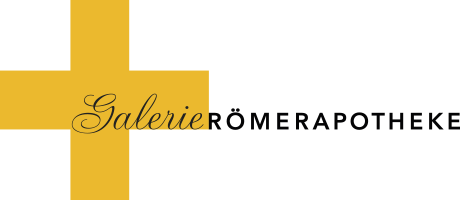3 x China - Arbeiten von Caucasso Lee Jun, Mao Yan, Fan Liu
Caucasso Lee Jun wurde 1970 in Shanghai geboren. Seine Jugendjahre waren von der Kulturrevolution geprägt, weshalb er 1975 mit seiner Familie aus Shanghai, einem Zentrum der Revolution, nach Guizhou, einer Provinz im Südwesten Chinas, zog. Hier begann er sich schon in Kinderjahren für Kunst zu interessieren. Lee Jun studierte 1986/87 freie Kunst an der Guijang School of Fine Art, 1988 am Guizhou Province Art College. Anschließend arbeitete er bis zu seinem 22. Lebensjahr als Animationsassistent in einer Trickfilmproduktionsfirma und konnte sich von dem dort verdienten Geld eine erste Photokamera, eine alte Hai Ou SLR, ein altes chinesisches Model, kaufen. Bald verbrachte er seine gesamte Freizeit damit, eigene Photographien in der Dunkelkammer des Shenzen Photographie Magazins zu vergrössern, Experimente einzugehen und dabei seine eigene Bildsprache zu entwickeln. 1998 kehrte Caucasso Lee Jun zurück nach Shanghai. Eine Zeit, in welcher der stärker werdende Einfluss der wirtschaftlichen Öffnung Chinas mehr und mehr an Zugkraft gewann. Das Zusammenwirken von Mensch und Stadt in einer so radikalen Umbruchsituation ist seither sein Thema. Nach dem Jahrtausendwechsel verbrachte Caucasso Lee Jun 2 Jahre in Beijing, lernte da eine neue, aufbegehrende und weltlich orientierte Künstlerschaft kennen und wurde Teil davon. Als Photograph unabhängig, agil und selbstgetrieben, wird er für die Nachwelt ein wichtiger Dokumentartist dieser sich unablässig veränderten urbanen Landschaft werden.
Mao Yan, 1968, Nanjing: Technically speaking, Mao Yan is by all means a genius. However, it is what beneath his brilliant use of light and shadow, colors and texture that makes him stand out. Each of his painting conveys complex feelings and features his persistent concentration. When you reach a certain stage in your life, persistence and concentration are everything. During the process of creation, it is absolutely natural for the painter to experience moments of anxiety, upset, panic and self-questioning. In the end, he presents viewers with the result of his concentration—a deep gaze into the soul, transcending the boundaries of time and space. In Buddhism, “meditation” is of vital importance. To gaze at the image of Buddha is considered to be a way of training one’s concentration. The fact that Mao Yan devotes himself to portrayals reminds people of sacred icon painter in the west or Thangka painter in the east. In a sense, the boundaries between west and east, reality and fantasy, past and present have been erased. When such a state is attained, genuine freedom is achieved.
The faith in the existence of another world makes present life worthwhile. To Mao Yan, such belief is aesthetic rather than religious. Like a sacred icon painter who pays great respect to God, he pays great respect to the secular people he observes and portrays.
When facing the canvas, am I communicating with myself? Or am I communicating with others? Actually, others and I are the same. It may sound a bit odd, but via certain medium such as art, the idea can easily be conveyed. Why the ordinary strangers in Mao Yan’s work seem to sparkle with inspiration and arouse deep sympathy in viewers? Why can those silent portraits and calm faces compose an impressively sorrowful melody? And behind the heart-stirring melody, the poetic spirit lasts forever. An expressive form, if used in the extreme sense, will easily drag people out of the reality, making them to wonder their whereabouts. Mao Yan’s work possesses exactly such energy. It needs to be reiterated that “energy” here is a more suitable word than “power”. To Mao Yan, powerful art is simply too vulgar.
Liu Fan from Wuhan, China, is definitely not an ordinary person. From her resume, we know she achieved the doctor’s degree of art when she was quite young, her works were exhibited overseas many times, she is an art critic and researcher, she has successfully planned a series of influential exhibitions. Furthermore, she has published many theoretical books and papers. Though she rarely attends the exhibitions in China, she frequently appears in the exhibitions overseas. Last but not least – as the associate professor in a university and chief editor of an art journal, it can be said that LiuFan’s social identity is multivariant … From LiuFan’s painting, we can see that ‘female’ body is the absolute subject. Those women are mostly bare or barish, but there is nothing pornographic or provocative, besides, it cannot make people appreciate or comment on the physical beauty. The female in her painting has no face or expression, and they are binded and fettered, or forced to posture strangely. In the painting Fetter, a mask in two women’s hands, and they make themselves graceful on purpose to please others, which shows women’s self distortion and compliance in the male-dominated society; in Hang, three women’s hair was befouled by sticks, their bodies are hanging in a tree, and there is a pool of blood under their feet, which makes people feel that the reality scorns and despises women’s life; in The captured maidservant, a woman is fettered in a garden, but it seems that her life is like the beautiful flowers and rockery, and finally is the plaything of others; in The ice land, a woman is on a floating ice in terror , under her feet, are the blood sea and the sharp ice that may cut her body any time, the painting presents the cruelty of women’s living circumstance and the absence of individual space and personality freedom…Female’s struggle and helplessness in the painting may be their existing circumstance in reality in LiuFan’s eyes.
